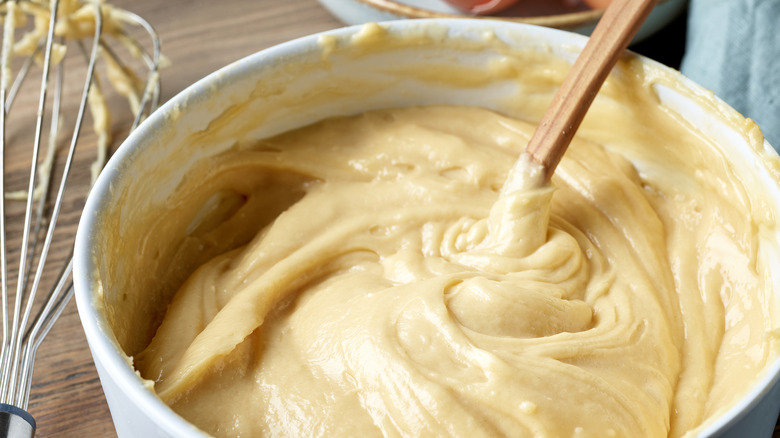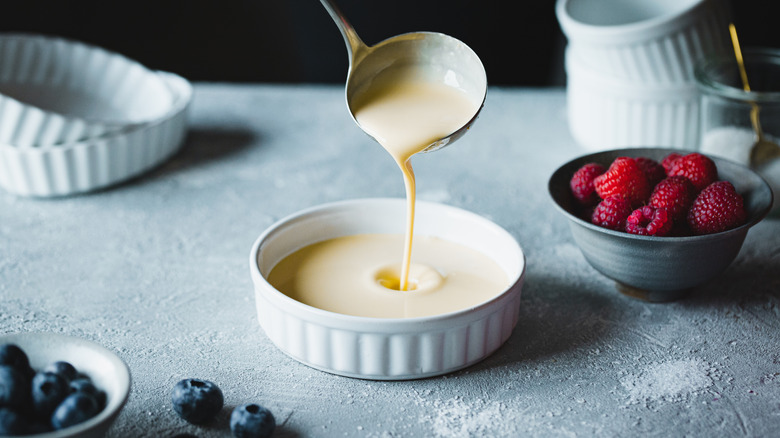The Wooden Spoon Trick To Help Determine When Custard Is Done
Custard is that creamy, dreamy concoction that forms the base of so many beloved custardy desserts, from classic crème brûlée to silky sweet pies. Yet, for all its delicious taste and texture, making custard can be a daunting task. Many home cooks end up wondering when exactly their custard is done cooking. Overcook it, and you're left with a curdled mess. Undercook it, and it's a runny disappointment. But the age-old wooden spoon trick is here to take the guesswork out of your custard-making endeavors.
While there are various methods to determine the doneness of custard, the wooden spoon stands out for its simplicity and accuracy. It's as easy as keeping a close watch as the custard cooks. Start with a gentle simmer over medium to low heat, and keep stirring. Continual stirring ensures even cooking and prevents the eggs from curdling, which could result in an unsavory, grainy texture.
Once the custard has begun to thicken slightly, lift your wooden spoon from the mixture. The custard should coat the back of the spoon uniformly. For the moment of truth, take your finger or a knife and draw a line through the custard on the back of the spoon. If the path remains clear, without the custard flowing back into it, the custard is done. It's thickened to a just-right consistency and is ready to be removed from the heat.
Other visual cues
Beyond the wooden spoon test, there are a few more pointers that can guide you. For example, your custard should have a creamy consistency. It won't be as thick as pudding but should have a noticeable body to it. You can also keep an eye out for steam. You want to see gentle steam rising from the custard, not bubbles. If it starts boiling, the temperature is too high, and you risk scrambling the custard by overcooking the eggs.
For those who love precision, using a cooking thermometer can take the guesswork out. Most custards are typically done at around 175 F. However, remember that eggs begin to set at about 149 F, so maintaining a gentle heat while stirring is crucial.
Finally, for the best results, and even if you think your custard is smooth, it's good practice to strain it through a fine sieve. This will catch any accidental bits of cooked egg or other impurities, ensuring a silky result.
Crafting the perfect custard is a blend of art, practice, and science. While it may seem intimidating at first, with a bit of patience and the trusty wooden spoon trick, you'll be dishing out delectably creamy custards every time without worry.

